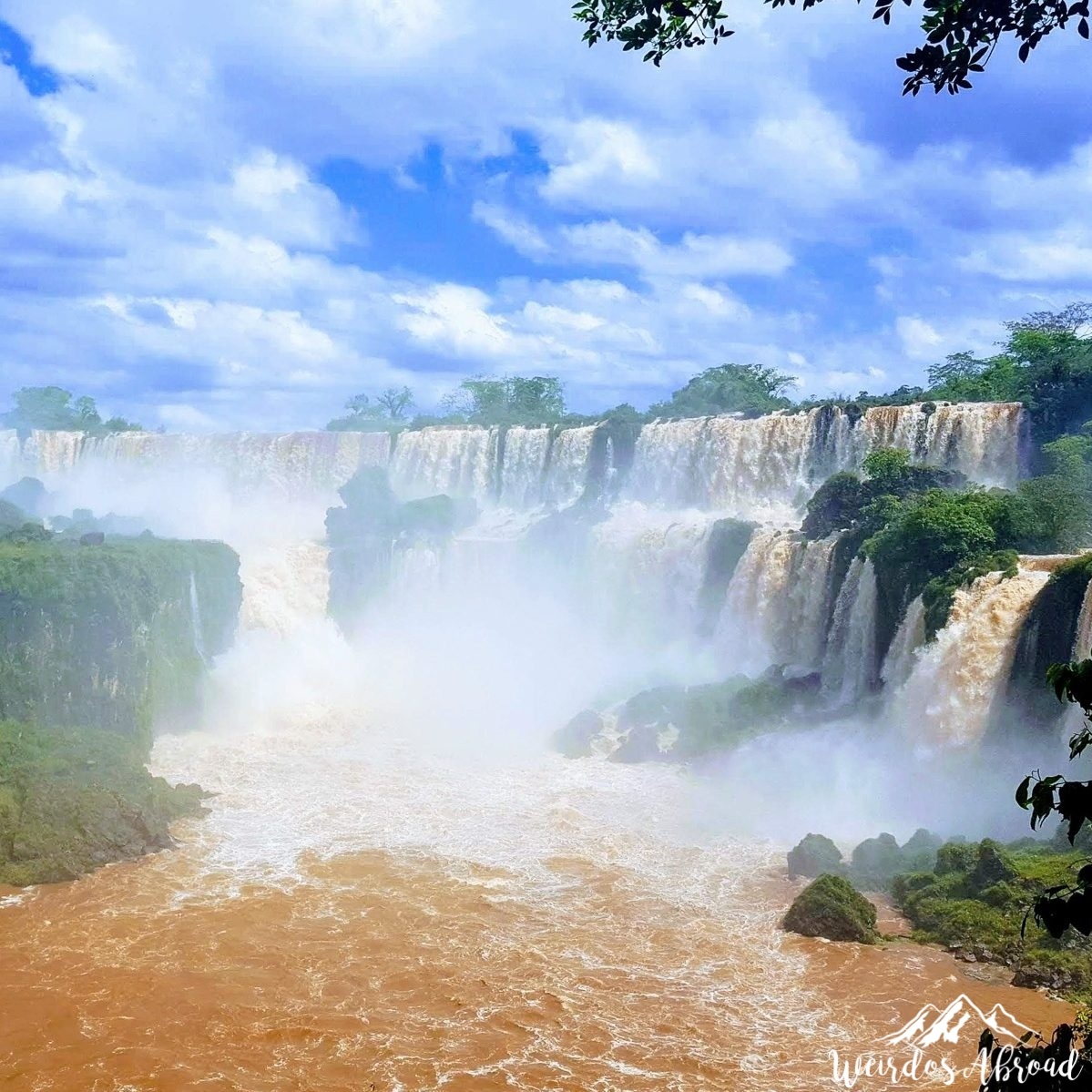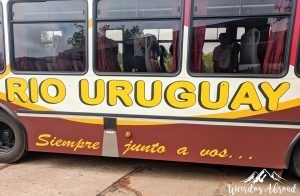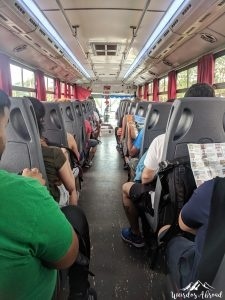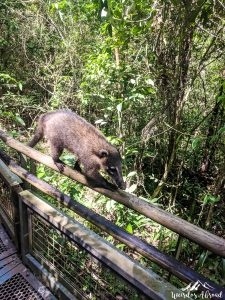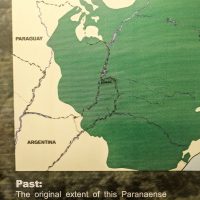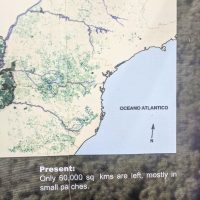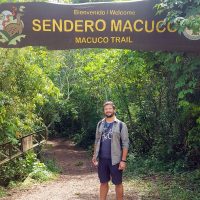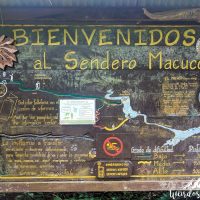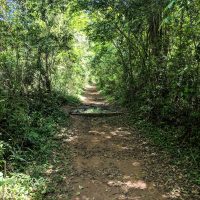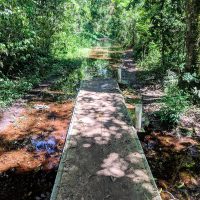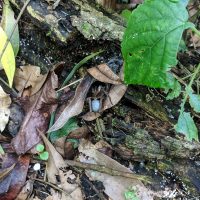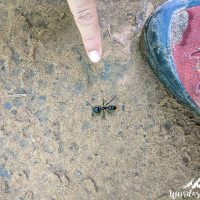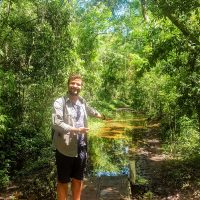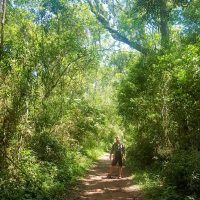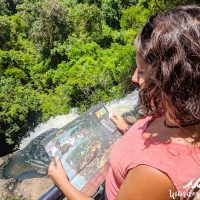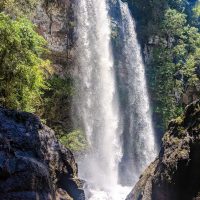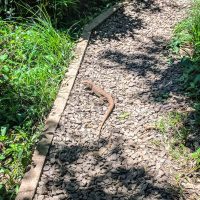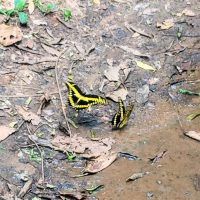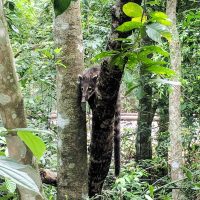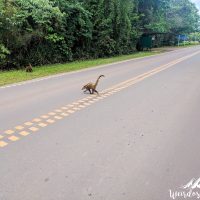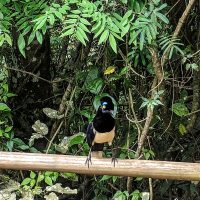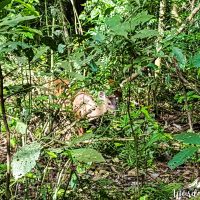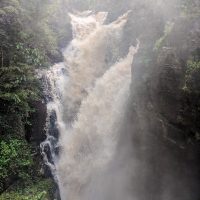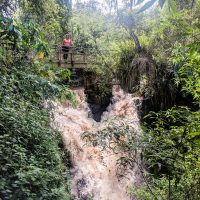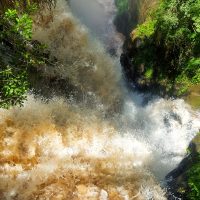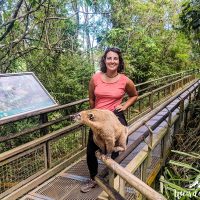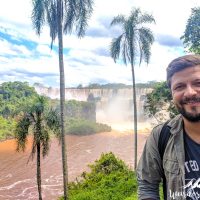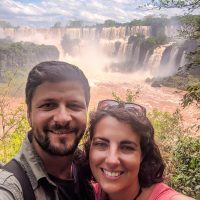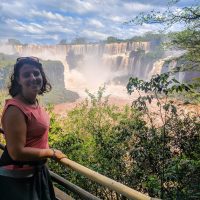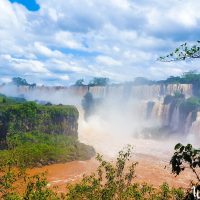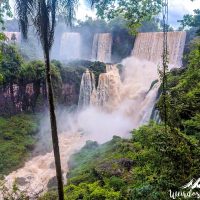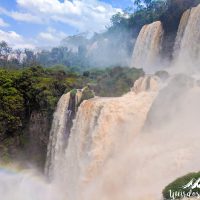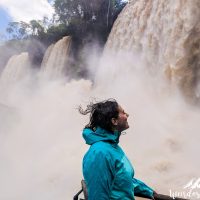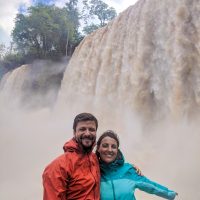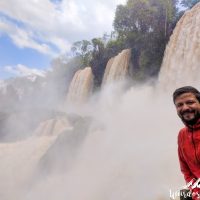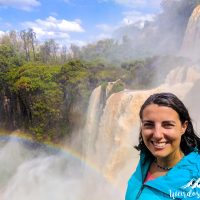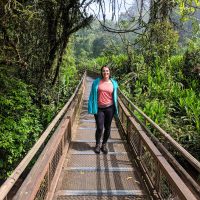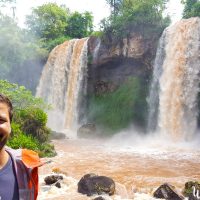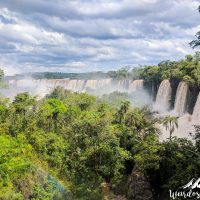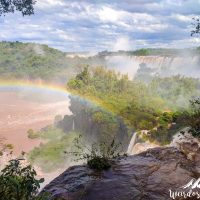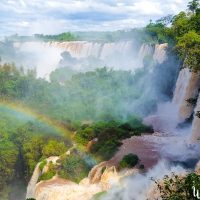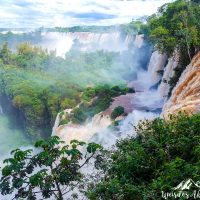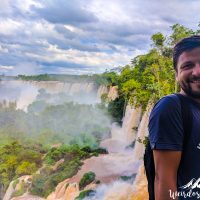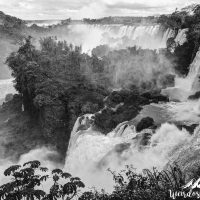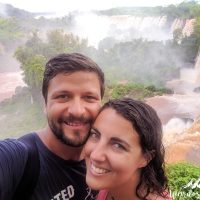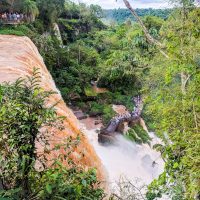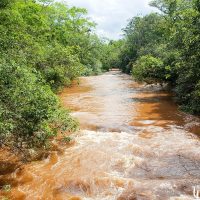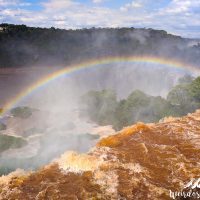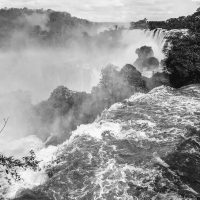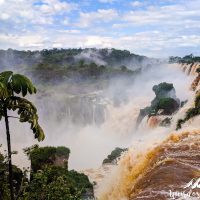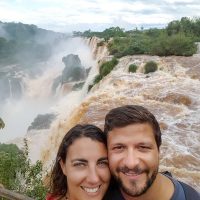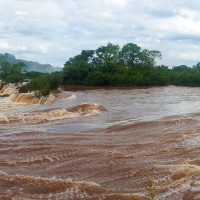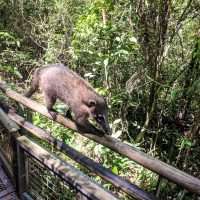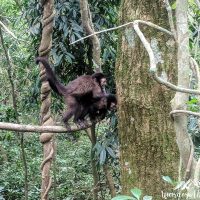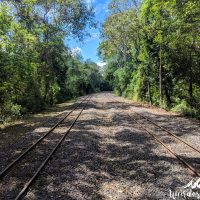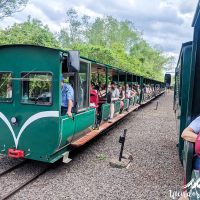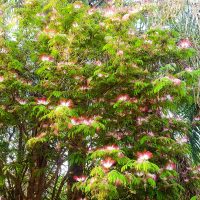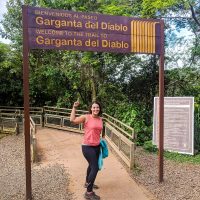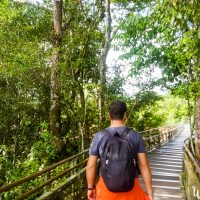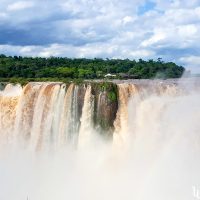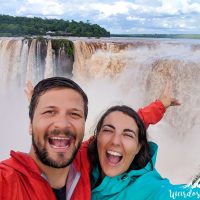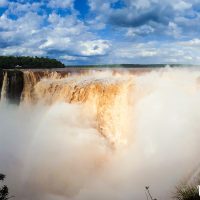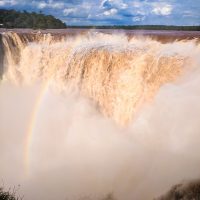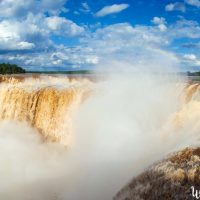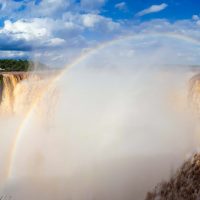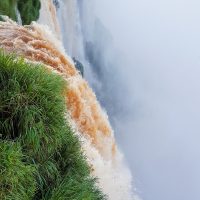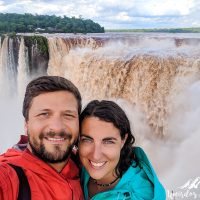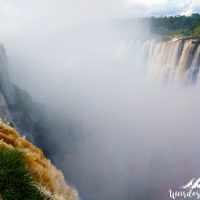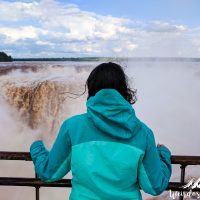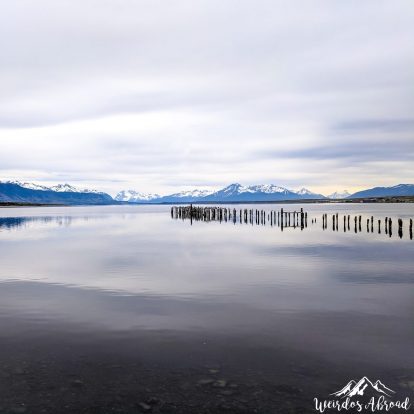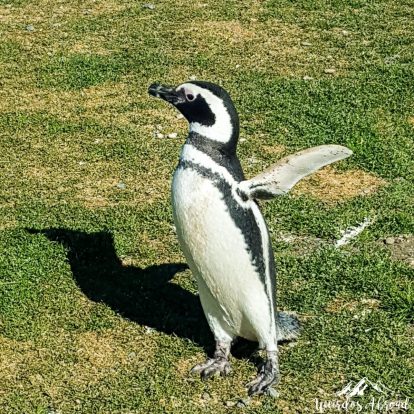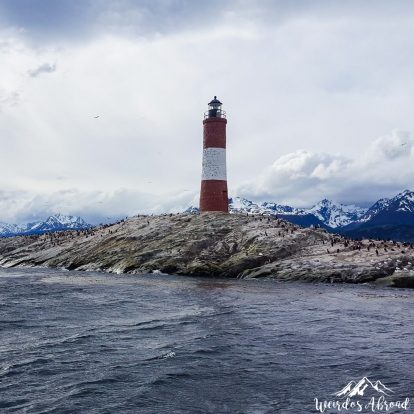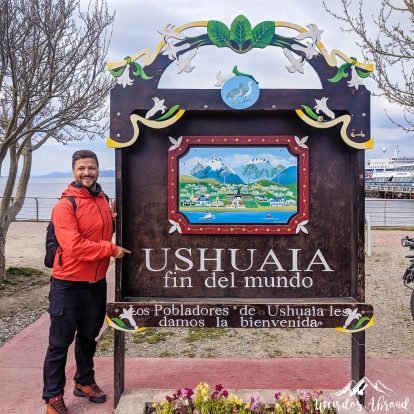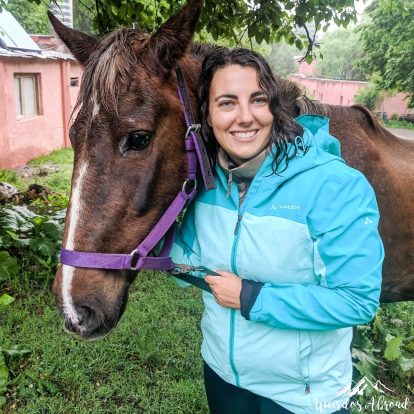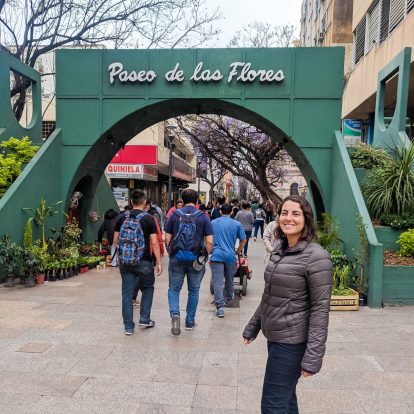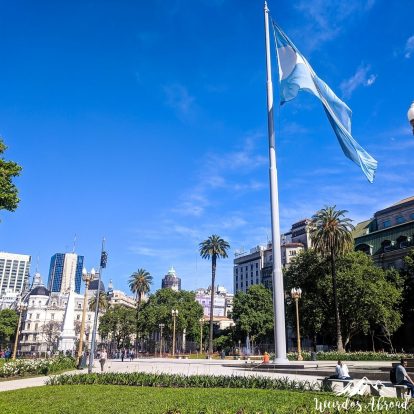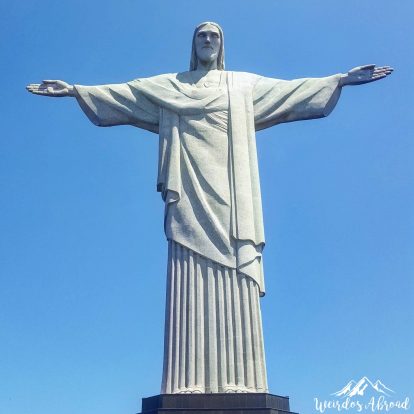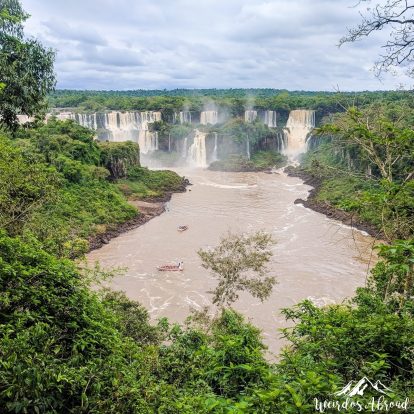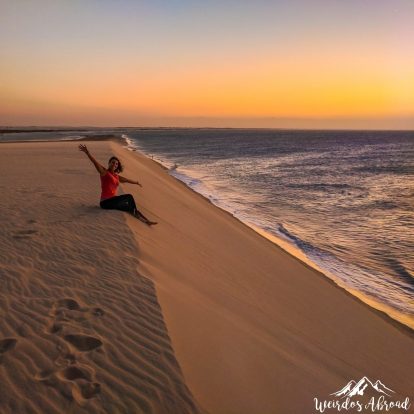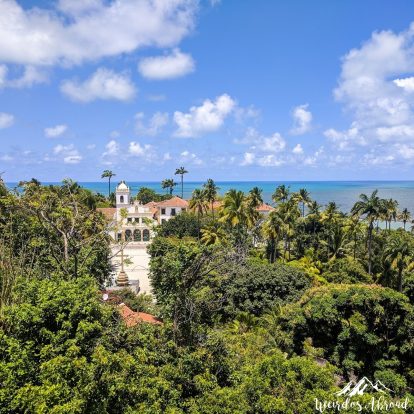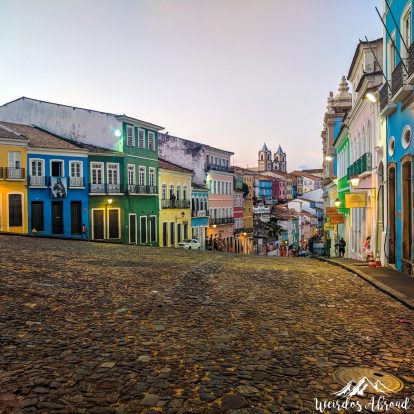Like for many other people, Iguazu Falls were on top of our bucket list of things to do in South America! And after having seen them, we completely understand why there are considered one of the 7 Wonders of Nature and is part of the UNESCO World Heritage Sites.
The amount of water flowing at one of South America’s biggest tourist destinations is approximately 2-13 million litres (roughly max 3,500,000 gallons) per second (just imagine that… for a second) depending on the season. Just to get an idea on the size the Iguazu Falls are four times the width of the Niagara Falls in the U.S. and Canada.
Note that the Falls are at the border between Brazil and Argentina. From Brazil you can visit the falls from Foz de Iguaçu. From Argentina you can visit the “Cataratas” (waterfalls) from Puerto Iguazu/ Misiones. Below you can find our experience on the Argentinian side.
Read also our feedback on the Brazilian side (read article)
Visiting the Argentinian side: practical guide
How to get there?
Unlike in Brazil, the bus to the National Park is more expensive that normal public buses. In October 2018 one ride was 260 ARS (~7 EUR) per person. It is easy to take it: get to the bus terminal or just wait at one of the bus stop on the main avenue for the bus with the sign “Cataratas”.
However if you are not alone it might be worth it to try negotiate a taxi! You can even agree on a price for both ways, which may help you decrease the total price.
We can recommend you a taxi driver that offered us very fair price in comparison to what we heard from other taxi drivers. You can contact him by Whatsapp in advance: Javier, 0054 (3757) 552691. His rates at the time were more or less the same as the bus price, but of course higher quality and hotel pick-up.
Of course you can also book a full tour with an agency that may include a guide but you will lose the freedom to explore the park at your own rhythm.
When should you go there?
From our experience on the Brazilian side: avoid week-ends and bank holidays! You have to imagine that this natural park with the trails and waterfalls can become quite crowded, even if its size is very big.
We visited the park on a Tuesday and although there was a lot of people, the lines to buy a ticket were relatively short in the morning.
We were lucky with the weather the day we visited, but all the other days were rainy. We were explained that it is a really rainy region in general but this is also why they have those beautiful waterfalls all year long! The region has a microclimate which on the sunny days it evaporates the water that turns into clouds which give rain. This cycle makes the region so unique.
How long is the visit?
The National Park on the Argentinian side is much bigger than on the Brazilian side. There are many trails so if you want to enjoy it fully, wear good walking shoes! In addition to the trails there are also paid activities available like the boat tour. Also, please note that the hiking trails sometimes are swampy so the good shoes are definitely needed.
Plan at least 5-6 hours to visit the park. We stayed 8 hours there!
Be careful when you are eating!
As we already warned you in our article about the Brazilian side: beware of the coatis! This cute animal, from the same family as the raccoon, is far from being shy of humans: you will see them everywhere looking for food! And even though human food is mostly harmful for them, they will still come and check what could you have for them: as soon as you put your bag somewhere they will come check it! And don’t try to fight them over your belonging: they are cute but can become aggressive!
Try to avoid eating outside if you see coatis around because for sure they will come to you…
Visiting Iguazu Falls: our recommendations!
When you get to the park you will have 2 options:
- start exploring by foot
- take a train to get to the Garganta del Diablo (Devils Throat): you will need to line for a ticket before accessing the station; there is one train every half an hour.
If you have time and like to walk we recommend starting exploring the different paths and keep the Garganta del Diablo for the end so you discover the park going crescendo! But if you arrive very early it might worth starting by the Garganta del Diablo and avoid the crowd; otherwise keep it for the end of the day. Last train back is at 17h30.
Note: you can also skip the train and go by foot, the path is actually not that long (keep in mind that the map is not on scale).
The Visitor's Centre
For once this Visitor’s Center is worth a visit. And not only to get a map of the park and a break at the toilets!
The free exhibition is a great introduction to the region, explaining the flora and fauna of the area and of the country but also its history. You will discover the indigenous tribes and the negative (and sad) impact of the human activities on the whole environment.
Macuco Walking Trail
The access to this trail is on the right of the train station. Since you normally need a train ticket to access this area you will have to explain to the employees on the way that you actually want to get to the Macuco trail for them to grant you passage…
This trail is the only one actually not going to the Iguazu Falls per se. Its interest is that it is a nature trail through the jungle leading to a nice but relatively small waterfall. Apparently you could swim there before but there must have some accidents because it is now forbidden. The trail itself is nice although it can get quite muddy; it is a pleasant escape from the crowd as not so many people get there and a different way to explore this area! Indeed we are so focused on the big waterfalls that we tend to forget that this is a Protected area with a diverse fauna and flora!
We got to see capuchin monkeys (like in Rio), coatis, lizards, birds, butterflies, spiders and super big ants! Keep an open eye!
The lower circuit: get wet!
We loved the circuito inferior! It was a great introduction to the waterfalls. It starts slowly with the discovering of relatively smaller waterfalls that you can experience from different angles. It gives you a first feeling of the power of the water!
All those circuits are easy walkways that will allow you to pass in front and above water. Many viewpoints on the way as you get closer to the big waterfalls.
Then you will arrive to a “wall” of waterfalls. Getting close is super impressive! Prepare to get wet!
The upper circuit: beautiful viewpoint!
The upper circuit goes above the waterfalls that got us wet in the lower circuit. Therefore it will offer beautiful viewpoints on those waterfalls. You can also see the river before the falls and it really is weird to find it almost quiet when a few meters ahead you are facing so much power!
Sorry for the lack of lyricism but it is hard to find the words to describe the overwhelming feelings we had in front of this sight!
The Garganta del Diablo
This part was already impressive from the Brazilian side, it becomes amazing from the Argentinian side!
As I said before you can chose to walk there or take the train. Note that the last train to come back is at 17h30. We were able to take the train without waiting, on both ways 🙂
From the station another easy walkway will bring you over the river. A peaceful landscape that really does not announce you what to expect. But slowly slowly the sound gets louder, you start seeing the “smoke” from the water… and suddenly here you are! On top of the most impressive waterfalls ever! And what a sight…
We cannot say more than this: you must experience it one day… completely worth it!!
Staying in Puerto Iguazu
We found Puerto Iguazu to be a much nicer little town than Foz de Iguacu, so if you plan to stay for a few days we would recommend you to stay here. The city itself is rather small so it is easy to go everywhere by foot.
They have a “water and light show” at the Tres Fronteras point, which is for free and every half an hour. If you have nothing better to do you could get there but we cannot say it is worth the detour! Note that they often have electricity cuts in the city so you might want to bring a flashlight (or have battery on your phone).
Our recommendations to eat
Eating healthy in Argentina seems to not be the easiest, or at least not the cheapest, and we were globally not so impressed. Of course you can chose to go for a parilla restaurant (meat) but it will of course be on the pricier side. However, among what we tried, we can recommend two (not healthy but good and relatively cheap) places:
- The Van Burger: very good burgers in a nice outside settings. They have good deals on beers too.
- Cremolatti ice-cream: well located and delicious ice-creams!
A brief update on the money issue
The problem with money in Argentina could be a blog post alone (one day). In a nutshell know that it is absolutely NOT worth it to withdraw money at an ATM: you are limited to amounts around 50 USD and on top you will have to pay 5 to 10 USD of fees! Therefore the best to come with USD or EUR to change. If you are limited on that currency, it is worth going to Brazil to withdraw money to exchange: even with losing on 2 conversions you will end up much better off that withdrawing money. Luckily more and more places are accepting payments by cards so whenever you can you should pay by card!
Our recommendation to exchange money: Austral Cambio. When were there it had the best exchange rate in town.

